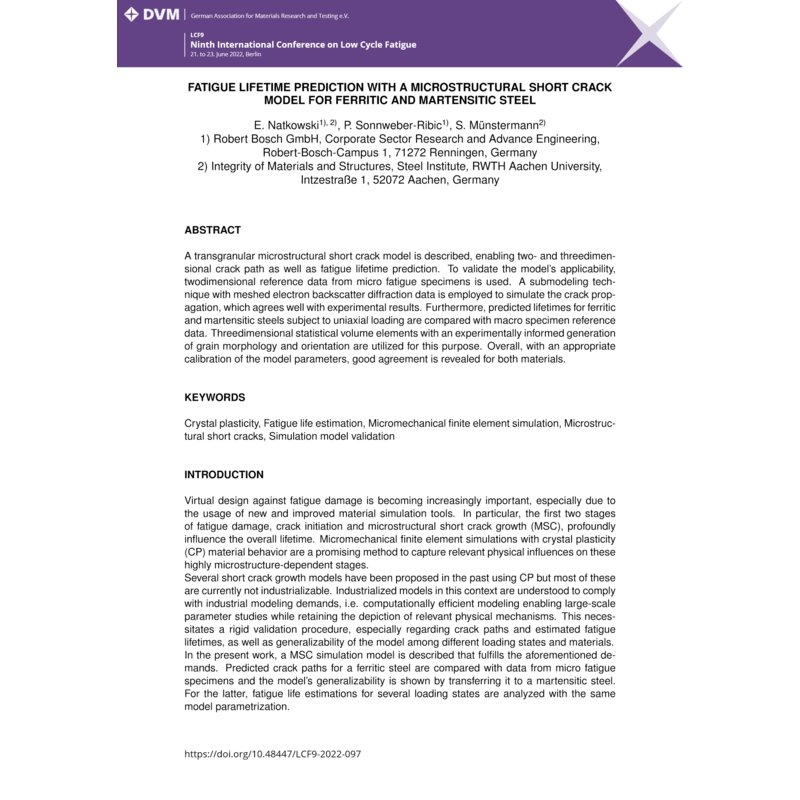- Nur online erhältlich



Virtual design against fatigue damage is becoming increasingly important, especially due to the usage of new and improved material simulation tools. In particular, the first two stages of fatigue damage, crack initiation and microstructural short crack growth (MSC), profoundly influence the overall lifetime. Micromechanical finite element simulations with crystal plasticity material behavior are a promising method to capture relevant physical influences on these highly microstructure-dependent stages.
Based on previous work, a transgranular MSC model is described within this framework, enabling two- and threedimensional crack path (see Figure 1) as well as fatigue lifetime prediction. To validate the model's applicability, twodimensional reference data from micro fatigue…

Datenschutzbedingungen (bearbeiten im Modul "Kundenvorteile")

Lieferbedingungen (bearbeiten im Modul "Kundenvorteile")

Rücksendebedingungen (bearbeiten im Modul "Kundenvorteile")
Virtual design against fatigue damage is becoming increasingly important, especially due to the usage of new and improved material simulation tools. In particular, the first two stages of fatigue damage, crack initiation and microstructural short crack growth (MSC), profoundly influence the overall lifetime. Micromechanical finite element simulations with crystal plasticity material behavior are a promising method to capture relevant physical influences on these highly microstructure-dependent stages.
Based on previous work, a transgranular MSC model is described within this framework, enabling two- and threedimensional crack path (see Figure 1) as well as fatigue lifetime prediction. To validate the model's applicability, twodimensional reference data from micro fatigue specimens is used.
A submodelling technique with meshed electron backscatter diffraction data is employed to simulate the crack propagation, which agrees well with the experimental results. Furthermore, predicted lifetimes for ferritic and martensitic steels subject to uniaxial loading are compared with macro specimen reference data. Threedimensional statistical volume elements with an experimentally informed generation of grain morphology and orientation are utilized for this purpose.
Overall, with an appropriate calibration of the MSC model parameters, good agreement is revealed for both materials.